For “tRaVersing or RV Day”:
How to inspect an RV for water damage
“I received a question from a concerned RVer the other day that went something like this; “My neighbor just paid an expensive repair bill for water damage on his RV and I would like to know what I can do to prevent this same thing from happening to
me?”
“One thing is for sure, if there is a way for water to get in your RV it will find it. Water leaks on an RV can cause extensive damage and can be extremely costly to repair. To protect your investment and your wallet you need to take the time to REALLY inspect for water leaks. The outside of your RV may look fine but the internal damage caused by water over a
period of time can result in the entire roof, floor or wall rotting away without you even knowing it, until it’s too late. You should
inspect your RV for water leaks twice a year at a minimum, and
especially prior to storage if it will be stored outside.
Here are a few things to look for during your routine inspections.

* Look for any discoloration, and feel for any soft spots on the ceiling around roof vents, air conditioners, TV antennas, plumbing vents, and any other openings that were cut in the roof. Soft spots are an indication that water damage has already started. Find the source of the leak and have it repaired immediately.
* Look for any discoloration or wrinkles in the wallpaper, and feel for any soft spots on the walls around all windows, doors, slide outs, or any other openings that were cut in the side walls.
* Identify the location of items like the water heater, furnace, outside shower, potable water fill and city water inlet on the outside of the RV and then access those areas from the inside of the RV. Look for any indications of water damage around these openings.
* Open all overhead cabinets and look in the top corner where the walls meet the ceiling for any discoloration and feel for any soft spots. This would indicate a leak at the seam where the sidewall and the roof attach.
* Check in all outside storage compartments for any indications of water leaks or water damage.
* Check for any soft spots on the roof itself especially around the roof seams at the front and rear of the RV. Thoroughly inspect all sealants on the roof around every opening.
Caution: Be extremely careful when working on the roof of your RV, a fall can cause serious injuries, or be fatal. Not all roofs are designed to be walked on. It may be necessary to use 2X4 foot sections of 1/2” plywood to distribute your weight over the roof rafters.
* Some Class C motor homes are notorious for leaks in the cab over bed area. Look for any signs of discoloration and feel for soft spots. Remove the mattress and feel for water.
* If your RV has fiberglass sidewalls look and feel the outside walls for any signs of delamination. Delamination is caused by water getting between the exterior fiberglass and the sidewall. When this happens the exterior fiberglass separates from the sidewall of the RV. You can stand at the front or rear of the RV and look down the side for any noticeable ripples or what looks like a bubble. You can also press on the sidewalls. If you feel the exterior fiberglass move it is delaminating. Many times delamination starts where an opening was cut in the sidewall
of the RV. Have any noticeable damage repaired immediately!
The key to preventing water damage on your RV is to perform these inspections on a routine basis and to discover and repair any leaks while in the early stages. If you don’t feel comfortable performing these inspections have an authorized service center do it for you.” From RV Tech Tips with Mark Polk)
________
Let your light shine before men – with less power
“Boondockers--those who by definition "camp in the boonies," away from utility hookups – have to be careful of their precious resources. One of the biggest pains is "running out of power." Lighting up the inside of the rig can consume a lot of juice in a short period of time.
Take a minute and add up how much power you use:
A typical incandescent bulb light fixture, sometimes called a "pillow light" by its shape commonly uses an "1141" bulb. Each 1141 bulb consumes 1.5 amps per hour, and produces a pitifully small amount of illumination. At least that's what our aging eyes tell us. So we turn on another one or two, and pretty soon, we're happily munching away at the "house" battery.
In comparison, the typical "double tube" fluorescent lamp produces gobs of light for just two amps per hour. Wow! What a difference technology makes. Now compare the "latest technology" light fixtures that produce light with light emitting diodes. Super-efficient, they produce almost no heat (hence no waste), and use power measured in "milli-amps," or thousandths of an amp.
We use all three types of lighting technology in our rig. Turning on an incandescent light to fish something out of a dark corner doesn't take much power because we keep the use short. Fluorescent lighting is our "mainstay" giving us plenty of light to keep us working and safe at night. The pricier to install LED technology is perfect for a reading light. The latter may take you some time to get used to, as the "color" of the light is different, and it's best used as a highly directional light, but when your power comes from solar panels or precious gas-fired generators, you surely want to keep your power consumption way down.” From: RV Boondocking News
______
Truck stop fueling tips
 “If your RV runs on diesel, you may wonder about filling up at the truck islands. Some RVers feel a bit intimidated by the big rigs and professional drivers. Don't be afraid, but do be courteous and things should go well for you.
“If your RV runs on diesel, you may wonder about filling up at the truck islands. Some RVers feel a bit intimidated by the big rigs and professional drivers. Don't be afraid, but do be courteous and things should go well for you.
First, remember for the truck driver, time is money. When you roll into the fuel island, be prepared to "get 'er done" as quickly as possible.
If you have a helper, send him or her inside with the credit card to pay. If you don't, go in yourself and leave your card at the fuel desk.
You'll find many pumps don't take credit cards, or if they do they're usually limited to fleet cards.
If you have tank ports on both sides of your rig, don't be afraid to use the satellite pump and the main pump at the same time. If your fuel port is on the side opposite the main pump, you'll need to take the filler nozzle out of the cradle, set it on the ground, and flip the lever up to operate the satellite pump.
Be careful when filling, the pumps on the big rig side pump MUCH FASTER than the consumer-style.
Clean your windshield? Sure, just do it while you're fueling. Once the tank is full, stop window washing, pull WELL ahead of the pump island so the next guy in line can get in and start pumping. THEN finish paying, and complete your windshield ministrations.
If you need to make a purchase, or hit the rest room, move your rig to the parking area FIRST.” By Russ and Tiña De Maris
______
On This Day:
Watson and Crick discover chemical structure of DNA, Feb 28, 1953:
“On this day in 1953, Cambridge University, England, scientists James D. Watson and Frances H.C. Crick announce that they have determined the double-helix structure of DNA, the molecule containing human genes.
Though DNA--short for deoxyribonucleic acid--was discovered in 1869, its crucial role in determining genetic inheritance wasn't demonstrated until 1943. In the early 1950s, Watson and Crick were only two of many scientists working on figuring out the structure of DNA. California chemist Linus Pauling suggested an incorrect model at the beginning of 1953, prompting Watson and Crick to try and beat Pauling at his own game. On the morning of February 28, they determined that the structure of DNA was a double-helix polymer, or a spiral of two DNA strands, each containing a long chain of monomer nucleotides, wound around each other. According to their findings, DNA replicated itself by separating into individual strands, each of which became the template for a new double helix. In his best-selling book, The Double Helix (1968), Watson later claimed that Crick announced the discovery by walking into the nearby Eagle Pub and blurting out that "we had found the secret of life." The truth wasn’t that far off, as Watson and Crick had solved a fundamental mystery of science--how it was possible for genetic instructions to be held inside organisms and passed from generation to generation.
Watson and Crick's solution was formally announced on April 25, 1953, following its publication in that month’s issue of Nature magazine. The article revolutionized the study of biology and medicine. Among the developments that followed directly from it were pre-natal screening for disease genes; genetically engineered foods; the ability to identify human remains; the rational design of treatments for diseases such as AIDS; and the accurate testing of physical evidence in order to convict or exonerate criminals.
Crick and Watson later had a falling-out over Watson's book, which Crick felt misrepresented their collaboration and betrayed their friendship. A larger controversy arose over the use Watson and Crick made of research done by another DNA researcher, Rosalind Franklin, whose colleague Maurice Wilkins showed her X-ray photographic work to Watson just before he and Crick made their famous discovery. When Crick and Watson won the Nobel Prize in 1962, they shared it with Wilkins. Franklin, who died in 1958 of ovarian cancer and was thus ineligible for the award, never learned of the role her photos played in the historic scientific breakthrough.”
______
Yesterday:
A busy day! After tending to Misty and Satchmo’s needs, I headed into the next town to go shopping. I dropped off a bunch of used grocery sacks at St. Mark’s Thrift Shop. They had been running a “$5 a Sack Sale”, where everything you could stuff in a sack was $5. They were running out of sacks.
Then I stopped at the Assistance League Thrift Shop as they were having their end of the month sale, but all I bought was a feathery toy for Satchmo.
At The Nearly New Thrift Shop, I bought a C-battery/110v radio/cassette player. Battery operated radios are always a good thing to have around. Now I won’t have to go out to the motor home to get that battery radio when the power goes out.
Then on to the appliance repair place, and as I thought, Mark said my washer was beyond repair. I had bought it used, from him, in 1995, but the bottom had just rusted through. Good thing I kept my other Maytag washer that I bought from him, used, in 1994. Back then I had another house at Lake Livingston, so that is why I had bought two.
As Mark is a certified AC repair man, I asked him why it is so expensive to have Mini Splits installed. He said it isn’t difficult at all, and even a DIY project. Hmmm! Maybe I’ll get one after all.
The enormous bin of scrap metal was already in the van, so when I went to the salvage yard, the washer went across the scales with the rest of it. The proceeds will buy me a month’s gas.
There wasn’t much time to dilly dally, as I had to rush home, get some lunch, put Satchmo in his carrier for a free vet check that came with his adoption at their vet. Satchmo didn’t like being in the carrier, and even more so because I had put a harness and leash on him. I didn’t want him to escape, and get in some hidey-hole at the vet’s office. The check-up was for his teeth, but the vet was very concerned about his voracious appetite. Satchmo wants to eat all the time. Two vets felt around his throat and said that he needed to have a thyroid test, especially as his heart rate was up. I wanted an older cat, so I suppose that’s what comes with it.
Poor Satchmo has hardly any teeth, and his canine teeth were in terrible shape, plus he has gingivitis, so it really must hurt for him to eat dry food. He was very good at the vet’s and let them look at his teeth, something I had tried to do, but failed. The vet gave me some antibiotics for his bleeding gums and told me that they will do his dental work after the thyroid test.
Funny, how pets think…on the way there he thought I was returning him to his previous place, and meowed constantly. As soon as he found out he was coming home with me, he settled down in his carrier.
At Petco, I put Satchmo’s carrier in a cart, and we went to visit Miss Priss in the SPCA habitat. She was doing great in there with Arty, and as it happened Kenya was there, so she saw Satchmo. She was glad that I had found him, as she had been trying to find me an old cat, but all the SPCA ones were at most 7 years old.
I have been feeding Satchmo three canned or home-cooked meals a day, but he still wants dry food, too. After seeing how sore his gums are, I have started soaking his dry food just like I have to do for poor old toothless Misty. If those two got in a fight, which they won’t, they would be in bad shape, especially as Satchmo was declawed on all four corners! Misty was very glad to see Satchmo in his carrier being brought in and put on the living room floor, and danced around it, tail a ’wagging. Even though, back to normal, they ignored each other as soon as he was let out of his carrier.
The free check-up covers his teeth, but not his thyroid test, so Satchmo and I have an appointment to have that done at my vet on Monday.

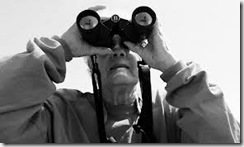
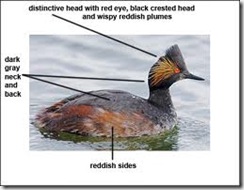


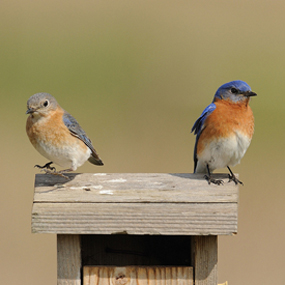
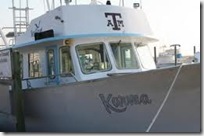

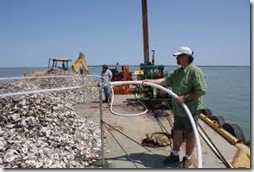








![images[8] images[8]](http://lh6.ggpht.com/-Ton2L8kVGBA/USoxSDQDi0I/AAAAAAAA1kQ/o5X6hDpElAM/images%25255B8%25255D_thumb%25255B2%25255D.jpg?imgmax=800)











